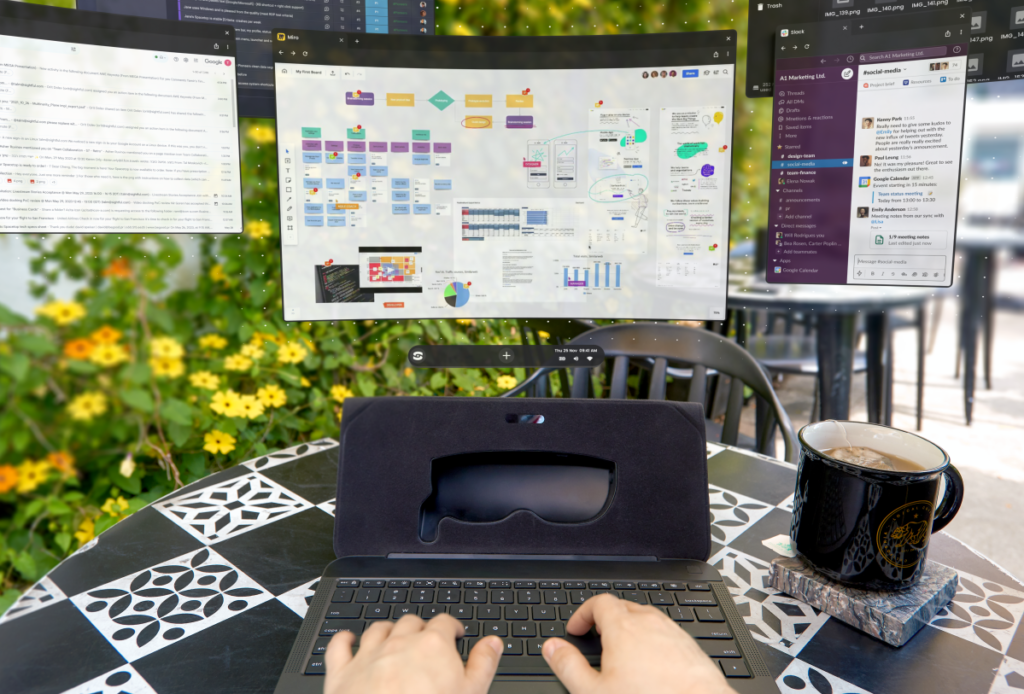The Spacetop G1 by Sightful is revolutionizing the AR headset experience by addressing the weight and discomfort issues commonly associated with traditional AR devices like the Apple Vision Pro. Unlike its counterparts, which pack all the tech into the headset itself, the G1 adopts a unique design approach. It pairs AR glasses with a laptop-like base, distributing the weight more evenly and reducing strain on the wearer’s face.
This innovative design makes the Spacetop G1 a more practical option for prolonged use, such as during extended workdays or immersive computing sessions. By shifting the heavy components to the base, the glasses weigh about as much as a typical pair of prescription eyewear, enhancing comfort and usability.
The G1 is positioned as “the laptop for the spatial computing era,” featuring a hybrid setup comprising AR glasses from Xreal and a laptop-like base complete with a keyboard and trackpad. This configuration enables users to interact with a virtual screen that overlays the real world, offering a versatile computing experience tailored for spatial computing tasks.
In terms of hardware specifications, the Spacetop G1 is equipped with a Qualcomm Snapdragon QCS8550 processor, 16GB of RAM, and 128GB of storage. While not designed for high-intensity gaming, these specs are well-suited for productivity-focused tasks, aligning with the product’s emphasis on work-oriented applications.
The AR glasses feature 1920×1080 OLED displays with 90Hz refresh rates, delivering crisp visuals with smooth motion. However, the field of view is limited to 50 degrees, which may impact the immersive experience of the virtual screen. Despite this limitation, the glasses offer support for custom prescription lenses and include Xreal’s 6W open-ear speaker system for audio playback.
One notable feature of the Spacetop G1 is its versatility in workspace setup. With two USB-C ports, the device can connect to standalone monitors, allowing users to seamlessly transition between virtual and physical screens. This flexibility caters to diverse work environments and preferences, enhancing productivity and workflow efficiency.
Wireless connectivity options such as WiFi 7, Bluetooth 5.3, and support for 5G and 4G further enhance the G1’s usability, enabling users to stay connected while on the move. However, the eight-hour battery life may limit its suitability for extended usage without access to power sources, particularly during long flights or remote work sessions.
The Spacetop G1 runs on a proprietary OS built on ChromiumOS, offering intuitive navigation through gesture controls. While some users have criticized its limited app support compared to mainstream operating systems, it seamlessly integrates with Google’s productivity software suite, making it an attractive option for users familiar with Google’s ecosystem.
Priced at $1,900, the Spacetop G1 may seem relatively expensive compared to traditional laptops or standalone AR headsets. However, its unique design and functionality offer a compelling solution for users seeking a versatile computing experience tailored for spatial computing tasks. Whether for professional use or personal enjoyment, the G1 presents an intriguing alternative to conventional workstations for tech enthusiasts and early adopters alike.
